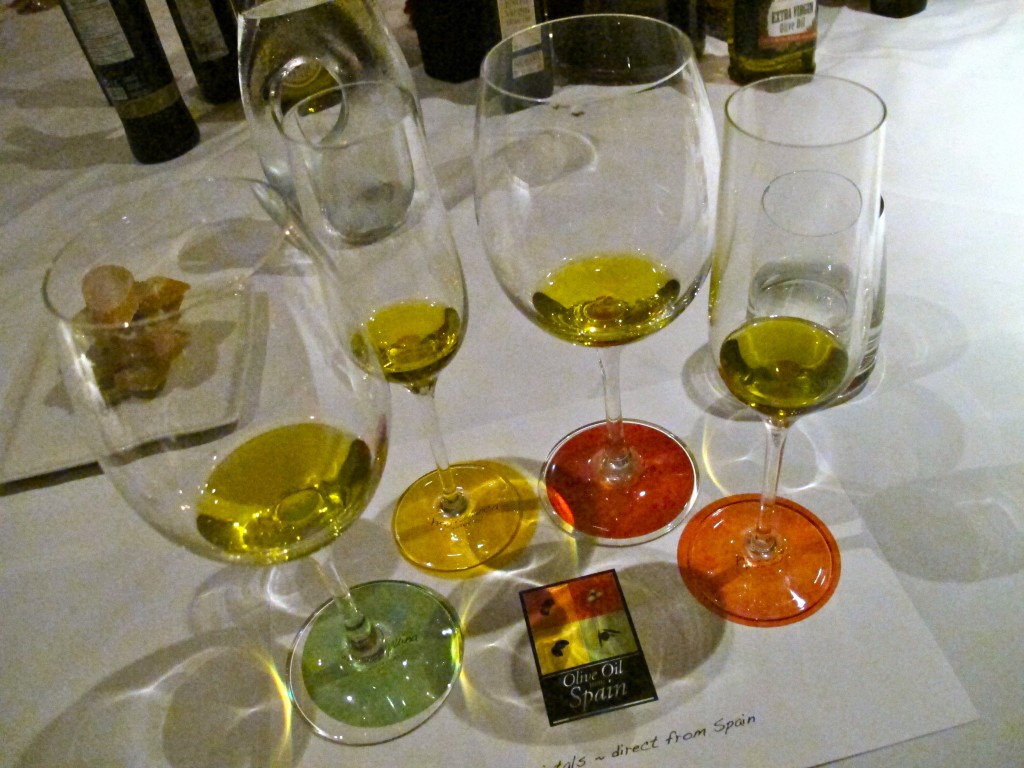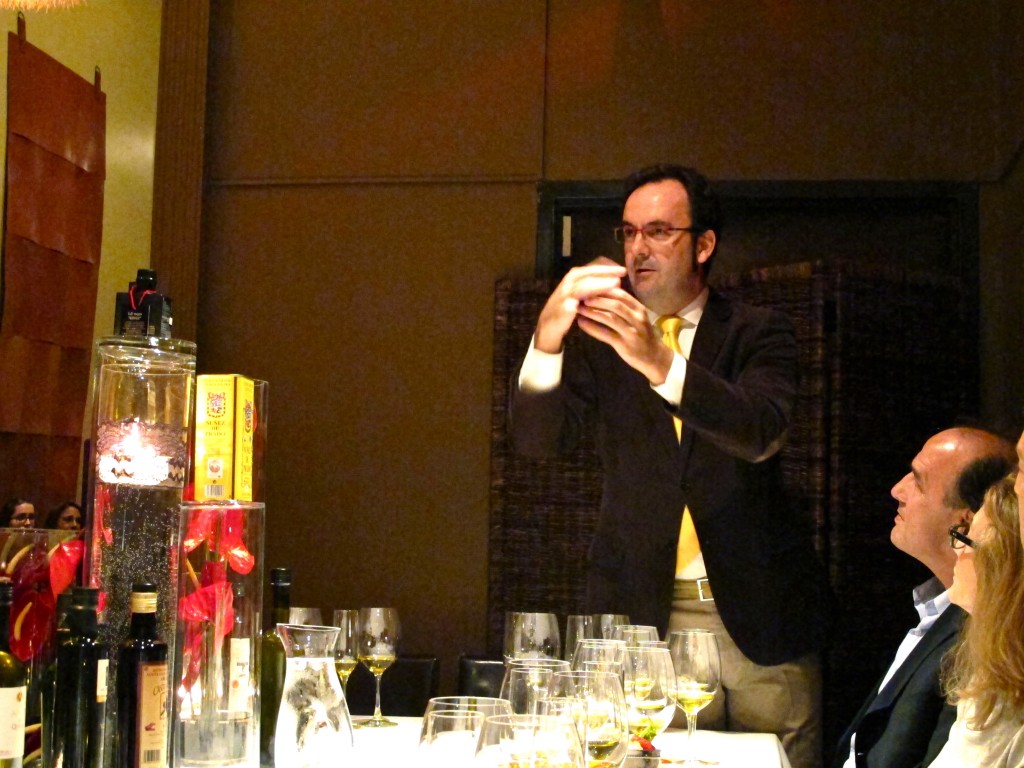Olive oil: not just for Italians anymore
Now this is something you don’t hear about every day — an olive oil tasting.
Olive Oil from Spain, a promotional campaign organized and funded by various Spanish olive oil and trade agencies, recently hosted such a tasting at Chef John Sedlar’s Playa. Led by olive oil expert Alfonso Fernandez Lopez, the tasting was similar to what you would expect at a wine tasting, but olive oil has specific attributes that require attention in properly analyzing the oil.
- For the best tasting experience, don’t eat bread with the olive oil.
- To release the oil’s smell, warm up the glass with your hands. If possible, use a dark colored glass so you can’t see the color of the oil.
- Smell for a “green” or “ripe” scent. Oils with a fruity aroma are best used uncooked, for finishing. Bitter oils should not be used with bitter greens.
- To taste the oil, suck it into your mouth quickly through your teeth, mixing air into the oil.
We tasted four Spanish varietals:
- Arbequina: smells fruity, like banana. Ripe, sweet. Good for finishing but too delicate for cooking.
- Cornicabra: smells like ripe banana, apples. Medium-strength smell.
- Hojiblanca: stronger smelling, like lettuce.
- Picual: intense smell, like arugula or green tomato. Bitter, astringent.
Even though I found all the oils to be “peppery” upon swallowing, i.e., it burns!, I enjoyed this unique tasting. I now know a little more about olive oil and how to use it properly, so that’s always a plus. And it didn’t hurt that we were treated to a lovely meal by Chef Sedlar afterward!
Note: This tasting and meal were hosted.








